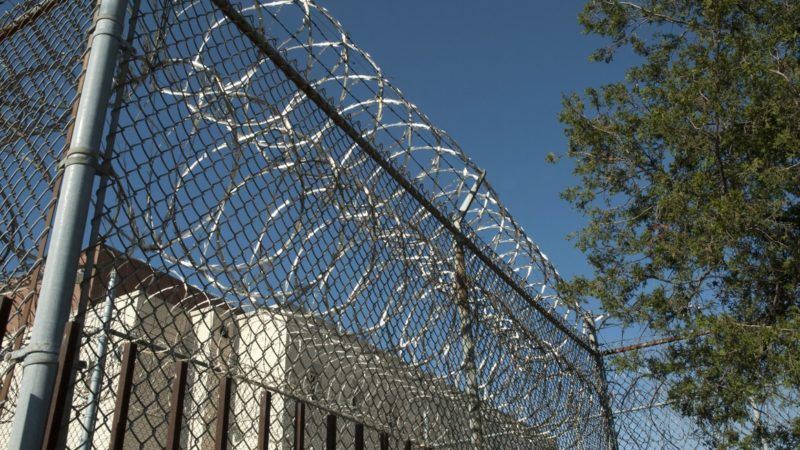U.S. Incarceration Rate Fell Last Year to Lowest Level Since 1994
Total prison population, imprisonment rates, and racial disparities in incarceration all continued their slide.

The U.S incarceration rate fell last year to its lowest level since 1994, continuing a more than decade-long decline in imprisonment, according to a study published Thursday by the Department of Justice's Bureau of Justice Statistics (BJS).
There were 33,000 fewer people incarcerated in state and federal prisons in 2019—down from 1.46 million at the end of 2018 to 1.43 million. The overall incarceration rate fell to 419 per 100,000 U.S. residents. That's a 3 percent drop from 2018 and 17 percent down from its 2008 peak.
The total U.S. prison population hit an all-time high in 2009 at a staggering 2.3 million people. Since then, it has fallen by 11 percent as states passed a wave of bipartisan criminal justice reforms in response to exploding budgets, crumbling prison infrastructure, and an increasingly loud outcry over the human costs of mass incarceration.
The vast majority of inmates in the country are held in state prisons and county jails, rather than the federal prison system. The BJS report does not include jail inmates, who are typically awaiting trial or serving sentences shorter than a year. The Prison Policy Initiative estimated that the total prison and jail population as of March this year was 2.3 million.
The prison population is expected to continue to fall this year due to the release of a significant number of inmates in response to the COVID-19 pandemic. The American Civil Liberties Union (ACLU) estimates that number could be upwards of 48,000.
Racial disparities in incarceration continued to decrease as well. According to the BJS, from 2009 to 2019 the imprisonment rate fell 29 percent among black residents, 24 percent among Hispanic residents, and 12 percent among white residents.
But there are still problems to be addressed. As the ACLU notes, the prison population is getting older, racial disparities—though dropping—still exist, and drug offenses continue to drive incarceration, contributing to 14 percent of the total prison population and 46 percent of the federal prison population.
"This data is quantifiable evidence of what we're seeing around the country: The fight to end mass incarceration is making progress, but is far from over," Udi Ofer, director of the ACLU's justice division, said in a press release. "Too many people are still needlessly incarcerated and at risk, especially during this pandemic. This is not a moment to pause, but to push harder. We are moving in the right direction, but must do more and be even bolder."


Show Comments (31)